| ILFORD Plate Boxes |
|
|
|
|
| Ilford plates as advertised in the 1930 British Journal of Photography Almanac | |
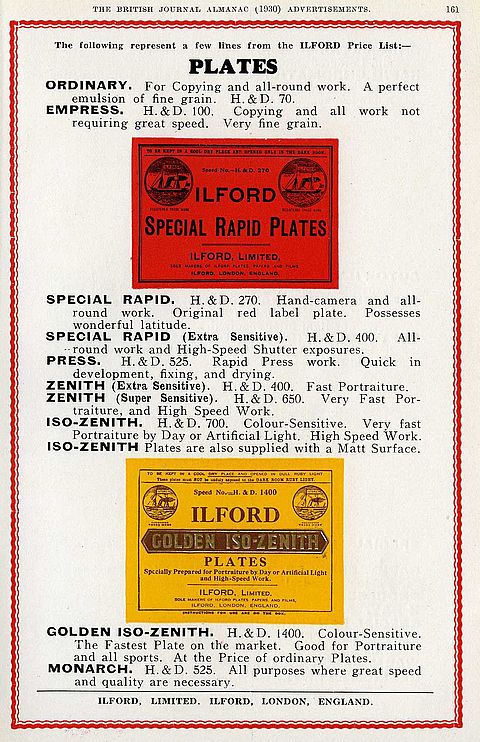 |
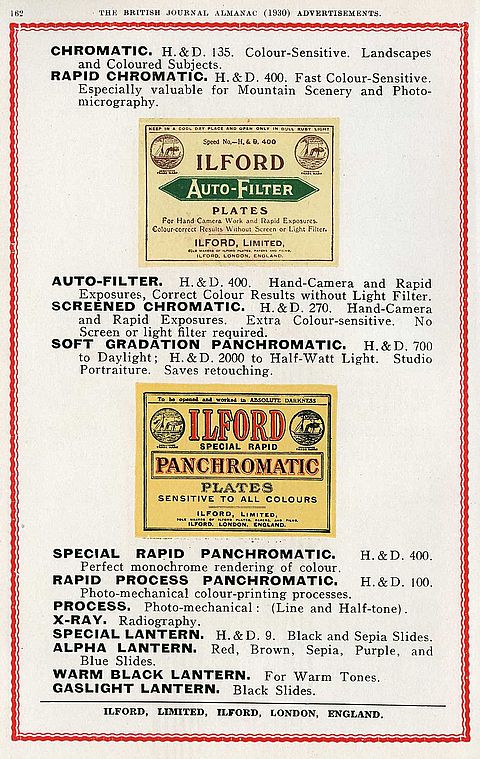 |
|
Ilford Alpha Lantern plates, first appeared in 1889. No speed rating as they were intended for making lantern slides (transparencies) by contact printing from a negative. This box may well date to around the earliest appearance as the Paddle Steamer image seems to correspond to the pre-1907 version. This box measures 60mm x 42mm. Image courtesy of Simon Spaans. |
||||
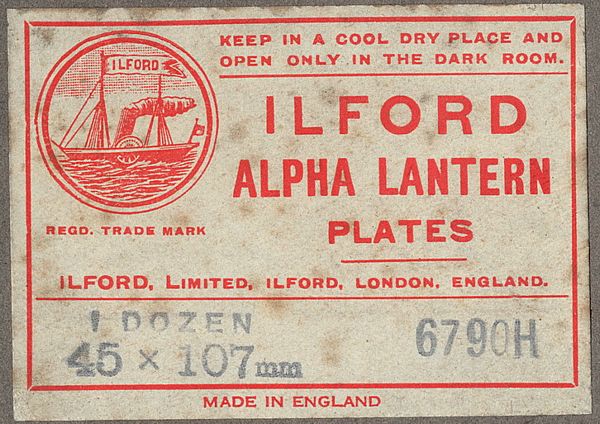 |
||||
|
|
||||
|
ILFORD Special
Lantern Plates, 1901 Image courtesy of Rab Egerton. |
||||
 |
||||
|
|
||||
| ILFORD
Special Rapid Plates, 1906 The following scans have been sent by Steve Jones. The box of Ilford Special Rapid Plates are believed to date to September 1906 (I 6 on the top image). |
||||
 |
||||
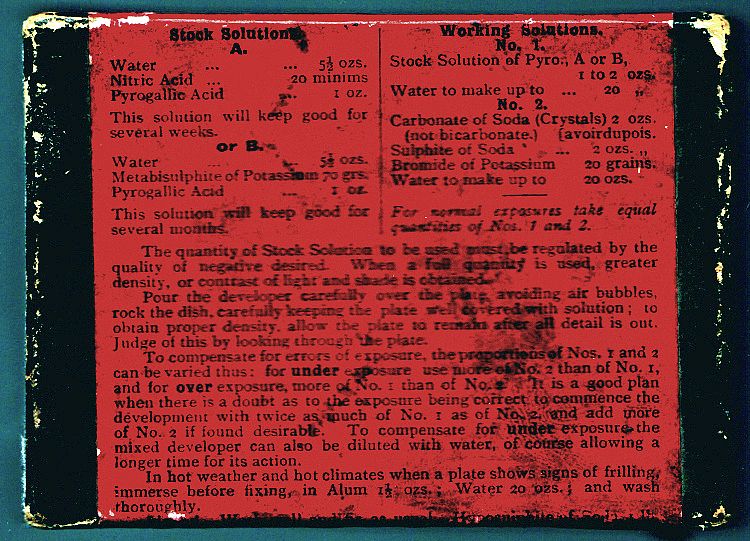 |
||||
 |
||||
 |
||||
| ILFORD
Special Rapid Plates, 1922-23 Below are shown Ilford Special Rapid plate box scans sent to me by Bambi. Their date markings, to the lower left of the development labels, suggest they date from June 1922 and June 1923. The boxes have a speed rating of 270 H & D (equivalent to around 20 ASA/ISO in the post-1960 rating system). Notice that the meaning of the 'rear of box markings' viz: 5920C, ExD 15, 6340F and ExD 33, is unknown, but the boxes were sourced in Japan, so its possible the markings relate to some Japanese system. Of ccourse, there cannot even be certainty that the two box halves correspond to each other. |
||||
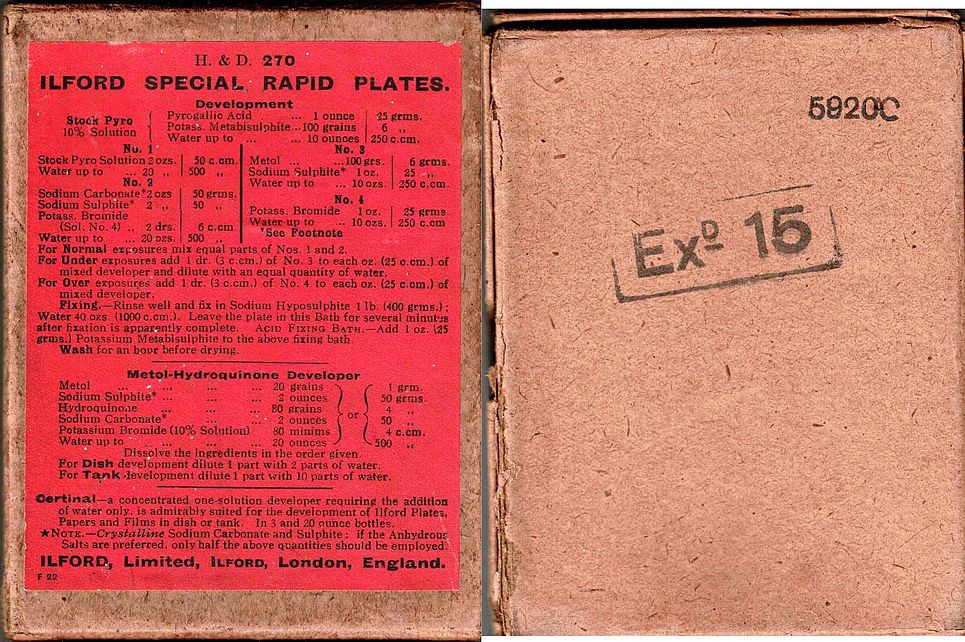 |
||||
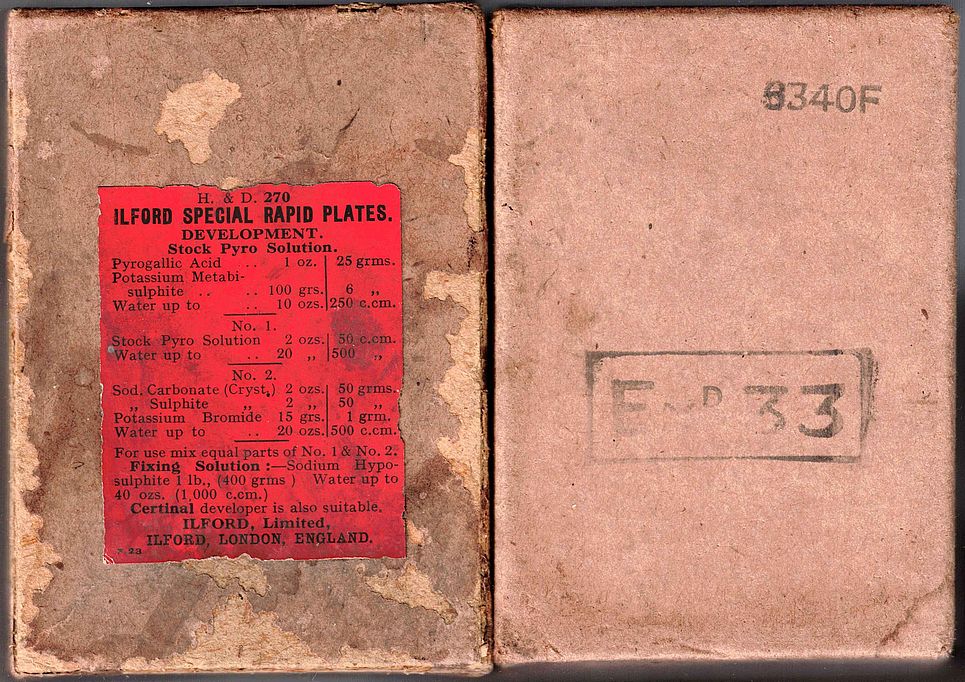 |
||||
| ILFORD
Special Rapid (Extra Sensitive) Plates, 1921 A third Special Rapid Plates box scan, sent by Bambi, this one labelled as 'Extra Sensitive' with a H & D 400 speed rating (around 32 ASA/ISO in the post-1960 rating system). As with the above boxes, the meaning of the 'rear of box' markings is not known. |
||||
 |
||||
| Ilford
Special Rapid Plates, May 1934 These plates are of emulsion sopeed 270 H & D, equivalent to a speed of 20 ASA/ISO in the post-1960 rating system. Special Rapid first appeared in 1895 but surprisingly, as this box image suggests, they were still being sold in 1934, though no doubt with an improved emulsion. The Paddle Steamer trade mark images are a combination of the 1911-1930 version (includes the Union Jack) and the post-1930, which excluded the word 'Limited' after ILFORD. The red colour pacakaging suggests these are orthochromatic (insensitive to red light) plates, rather than panchromatic (sensitive to all colours) as the Special Rapid Panchromatic Plates, shown further below. |
||||
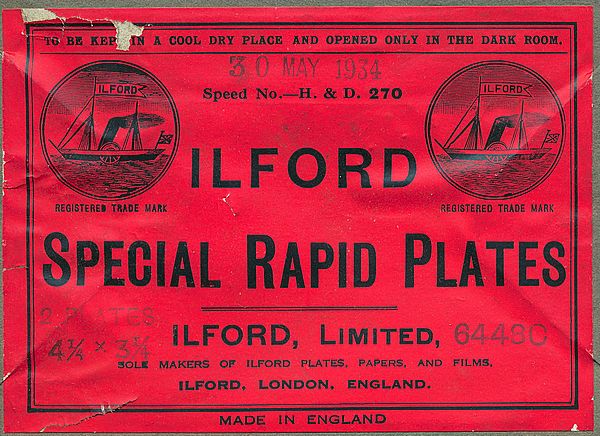 |
||||
| Ilford
Soft Graduation Panchromatic plates (100 ASA/ISO in the post-1960 speed system)
first appeared in 1928, but this box dates to post-1933, due
to it having an Ilford 'E' speed rating nomenclature and also
a Weston speed. The Paddle Steamer images correspond to post-1930.
It could date anywhere up to 1945, when use of the paddle steamer
trade mark was 'dropped'. The following two images have been provided by Simon Spaans. |
||||
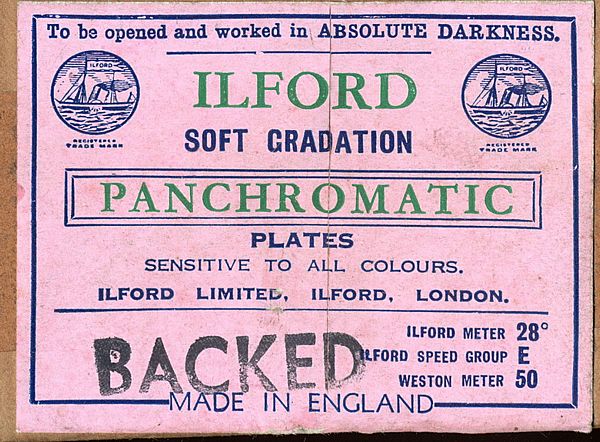 |
||||
|
|
||||
| Ilford Empress Plates. These 100 H&D plates (equivalent to 8 ASA / ISO in the post-1960 speed rating system) first appeared in 1895, but surprisingly this box's date stamp suggests they were still being sold as late as 1935 (and still at the original speed rating, though no doubt with an improved emulsion). Interestingly, the Paddle Steamer trade mark seems to be a version which is a 'cross' betyween the 1911 version and the one which started to be used in 1930, so perhaps indicating a transition period in the early 1930s. In particular, it shows a flag similar to the Union Jack (as the 1911-1930 version) but doesn't show the word 'Limited' after ILFORD, which became the style from 1930 (or thereabouts). | ||||
 |
||||
|
Empress Plates when first produced (1895) were packaged in just a plain black box with a processing instruction label attached to the top, as can be seen below. The left hand image is from a half plate (4¾" × 6½") sized box in the collection of Simon Tainton. It has a B2 date identification to the top right of the label, suggesting the packaging dates from February 1902. Unfortunately a white sticker has been applied to the lower part of the instruction label, but the image alongside, taken from an auction internet site, shows the full developing formula and other instructions. This second label has no date identifier, but otherwise appears ientical. The very earliest Empress Plates showed the manufacturer's address as The Britannia Works Company, Limited, Ilford, London, E, instead of (as below) ILFORD, Limited, Ilford, London, E, a company name change that formally occurred on 24th December 1900. |
||||
.jpg) |
|
|||
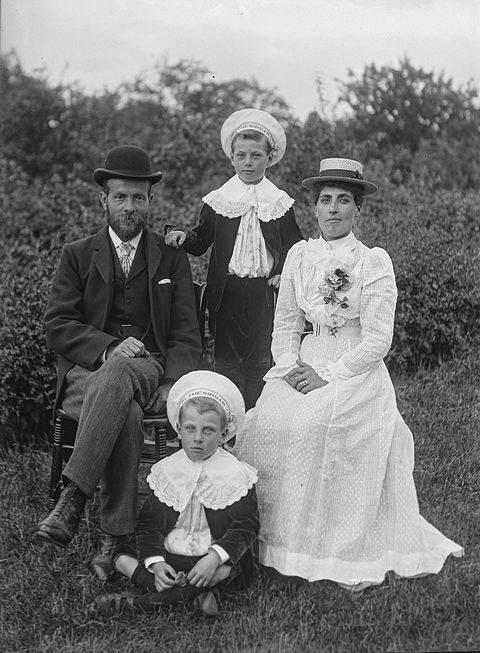 |
Simon Tainton's box of Empress Plates was marked B2, implying they were produced during, or shortly after, February 1902. In an attempt to corroborate this date, Simon scanned the 14 glass plate negatives contained within the box. The image alongside is from one of those negatives. This one is relevant in that the boys are wearing sailor suits with hats that bear the name of a ship, The Sirdar. Simon found two web sites referencing a ship named The Sirdar. One mentions a Tyne built steel steamer
that launched in 1898 and was wrecked in 1910. As Simon says "... whichever ship the hats reference, the dates are pretty close"......(to the 1902 B2 reference on the box). |
|||
|
|
||||
| Ilford Special Rapid Panchromatic Plates, (32 ASA / ISO in the post-1960 speed rating system) first appeared in 1919, though the label date identifier of C26 suggests this particular boxed was packaged in March 1926. The Paddle Steamer trade mark may well be the 1911-1930 version (though the Union Jack flag is indistinct). | ||||
 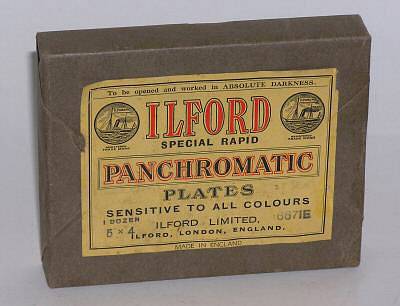 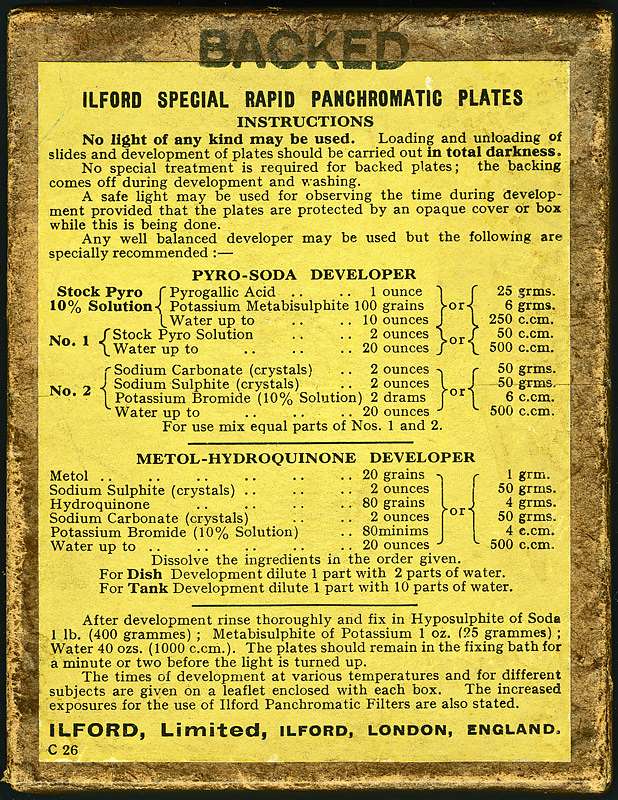 |
||||
|
|
||||
| The images below are taken from the Ilford Catalogue of Products for the Process and Photo-Mechanical Industries in 1936 (courtesy of Michael Talbert). | ||||
.jpg) |
.jpg) |
|||
.jpg) |
.jpg) |
|||
|
At the bottom of the above list of specialist Ilford Plates (left hand page), appears Commercial Ortho, with a H & D speed of 250. The Commercial Ortho
flat film box shown below (courtesy of Michael Talbert)
dates from 1961 to 1966. The earliest reference found
for Ilford Commercial Ortho film is in the above Ilford Graphic
Arts catalogue for 1936 where the film is rated at 250 H &
D. In the 1956 Ilford catalogue,
it was described: Not much is known about this film after 1970. A reference has been found dating to 1979, but subsequently it seems to have been replaced by Ilford Ortho Plus, maybe in the 1980s? Ortho Plus film was the same speed and was made in flat film, 120 roll film and 35mm formats. |
||||
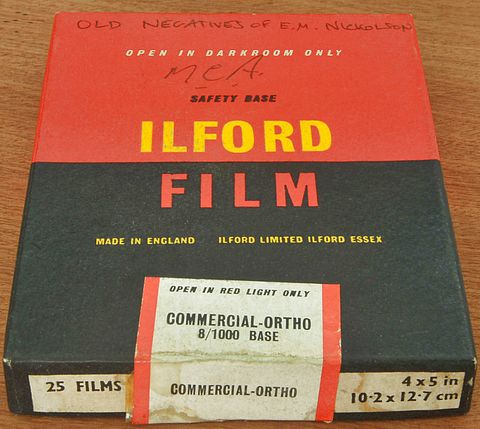 |
||||
|
||||
|
|
||||